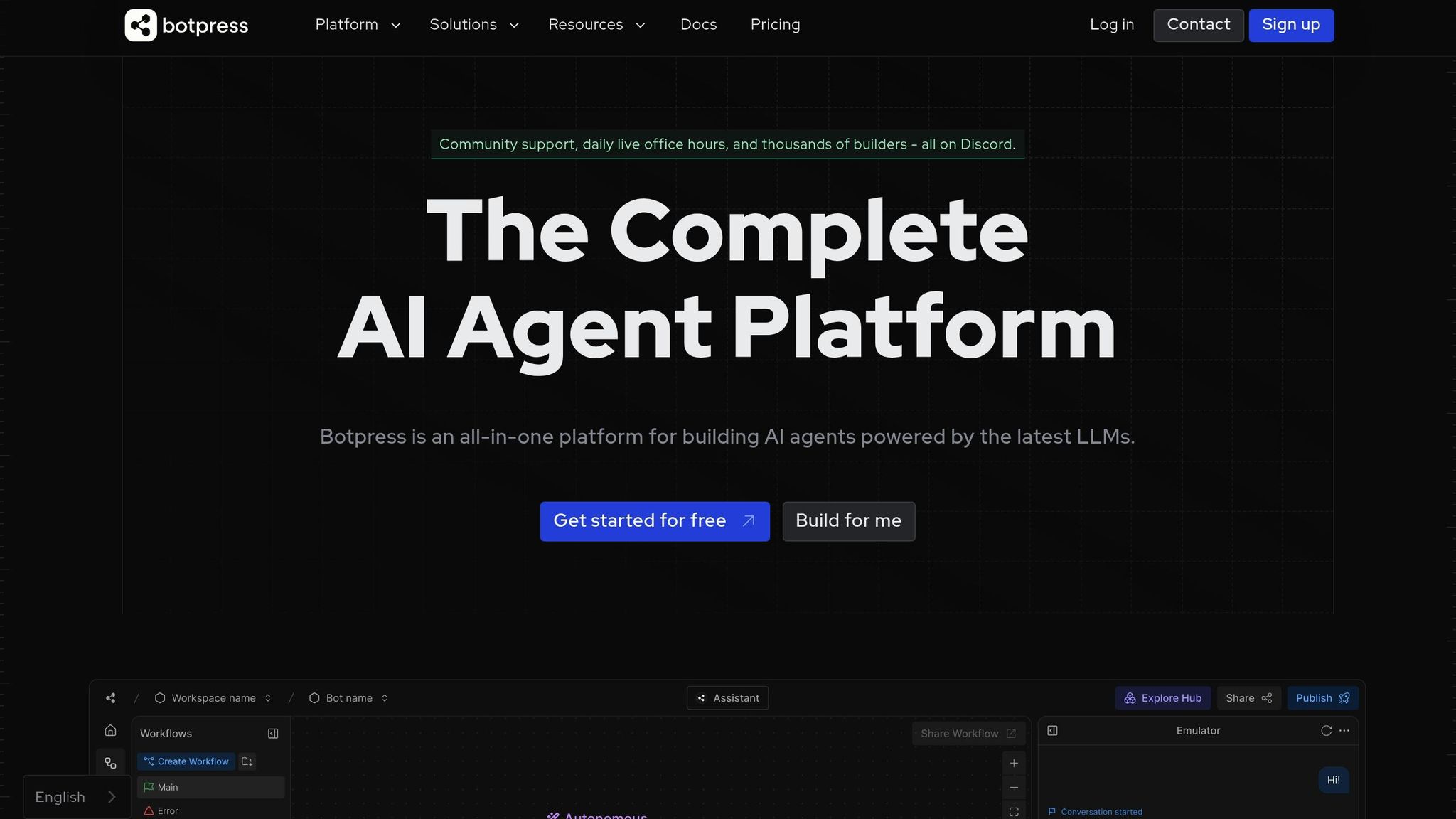Create Your Own AI Girlfriend 😈
Chat with AI Luvr's today or make your own! Receive images, audio messages, and much more! 🔥
4.5 stars

How Scenario Transitions Improve AI Chats
Scenario transitions make AI chats smoother and more engaging by helping the AI shift between different contexts without breaking the flow. They ensure conversations feel natural, maintain context, and adapt to user input. Here's why they matter:
- Better Context Awareness: AI remembers past interactions for consistent replies.
- Accurate Responses: Replies stay relevant and precise.
- Improved Flow: Conversations transition seamlessly between topics.
- Enhanced Roleplay: Characters behave consistently across scenarios.
Platforms like Luvr AI use conversation states and transition triggers to manage these shifts. For example, characters like "Gym Girl Lauren" or "New Student Amaya" maintain their personalities while adapting to user input. Despite challenges like context retention and managing multiple states, advanced systems improve these transitions through real-time analysis and user feedback.
Key Benefits in AI Chats:
| Feature | Benefit |
|---|---|
| Contextual Memory | Keeps conversations connected and smooth |
| Emotional Adaptation | Matches user tone for natural responses |
| Customization | Lets users shape AI personalities |
As AI evolves, platforms like Luvr AI continue refining these systems, focusing on smoother transitions, better customization, and stronger privacy protections to make interactions more immersive and enjoyable.
Core Mechanics of Scenario Transitions
Main Components
Scenario transitions work by using conversation states and transition triggers to create smooth, natural interactions.
Conversation States are specific points in a discussion that help maintain context. For example, Luvr AI uses clearly defined character scenarios to set these states. Think of "Gym Girl Lauren", who starts with a casual meeting at the gym, or "New Student Amaya", whose story begins with a knock at the door.
Transition Triggers are the cues that shift the conversation from one state to another. These include:
- User Input: Changes context based on what the user says.
- Scenario Markers: Pre-set moments that signal a shift in the conversation.
- Context Memory: Keeps track of the conversation's history to ensure transitions feel natural.
- State Management: Monitors active conversation details during role-playing.
These elements work together to allow Luvr AI to handle a variety of character interactions. They maintain each character’s unique personality while ensuring conversations flow naturally.
Common Technical Issues
Even with these tools, challenges remain. One big issue is context retention, where the AI might lose track of character traits or dialogue history. This can break the immersive experience, especially for platforms like Luvr AI. Managing multiple conversation states at once is another hurdle, particularly in systems that allow user-created characters and private chats. Finally, finding the right moment to shift between states without disrupting the conversation is a tricky balance.
To address these challenges, modern AI platforms like Luvr AI employ advanced context management techniques to keep character traits consistent across different scenarios.
Key Advantages
Custom User Experience
Scenario transitions change how users interact with AI chats by offering a highly personalized experience. Conversations adjust based on user preferences and previous interactions, keeping context and memory intact across different states.
With Luvr AI, users can create AI characters with unique personalities and backstories. This customization lets users shape their interactions exactly how they want, leading to conversations that feel more genuine and enjoyable.
Improved Emotional Responses
Scenario transitions help AI respond in ways that match the user's emotions. By analyzing the context of the conversation and the user's mood, the AI can shift smoothly between emotional tones, syncing with the user's energy and feelings.
This ability to adapt emotionally makes conversations feel more natural. Users have noted how the system maintains emotional consistency while moving through different scenarios, creating stronger connections.
How Luvr AI Uses Scenario Transitions

Luvr AI takes these emotional and contextual capabilities and applies them to immersive roleplaying experiences. The platform highlights how scenario transitions enhance character-driven interactions.
Here’s how Luvr AI benefits from scenario transitions:
| Feature | Benefit |
|---|---|
| Character Consistency | Keeps personality traits steady across various conversation states |
| Contextual Memory | Recalls past interactions for smoother and more connected engagement |
| Adaptive Responses | Adjusts tone and style based on user preferences and feedback |
| Seamless Transitions | Allows for a natural flow between different roleplay scenarios |
Users have praised the platform for its engaging and fluid conversations, showcasing how effective scenario transitions can make AI interactions more immersive and enjoyable.
Testing and Improvement Methods
Performance Testing
To evaluate scenario transitions, it's crucial to measure key metrics like context accuracy, response time, emotional coherence, and memory retention. These metrics help determine how well the AI keeps the conversation flowing and delivers timely, relevant responses. Reviewing user feedback also sheds light on how effective these transitions are. Together, these insights guide developers in making targeted adjustments to improve the system.
System Improvements
Refining scenario transitions is an ongoing process that relies on user data and feedback. Developers examine conversation patterns to spot areas where users may feel disconnected and make improvements accordingly. Some effective strategies include:
- Real-time Analysis: Observing conversation flows to identify common trouble spots where transitions may falter.
- Feedback Integration: Using user feedback to fine-tune the transition framework, especially when feedback indicates strong engagement levels.
- Performance Optimization: Regular updates aimed at reducing response delays, improving context tracking, boosting memory retention, and fine-tuning emotional responses.
This step-by-step process builds on what works while addressing weak points, helping scenario transitions feel smoother and more engaging over time.
sbb-itb-f07c5ff
Next Steps in AI Chat Development
Future Updates for Luvr AI
Luvr AI is refining its chat experience with a series of updates designed to make conversations more engaging and tailored. Here's what's coming:
- Advanced Character Customization: Users will have more control over shaping AI personalities to match their preferences.
- Smoother Roleplay Transitions: Improved systems will maintain consistent character behavior and ensure seamless roleplay interactions.
- Stronger Privacy Protections: New features will enhance data security and keep chats confidential.
- More Interaction Options: Additional communication modes will be introduced to create a richer, more dynamic chat experience.
These updates are shaped by user feedback, aiming to improve how AI chats feel and function.
COMPLETE Tutorial on AI Transition in Botpress - Botpress ...

Conclusion
Scenario transitions play a key role in making AI chats feel smoother and more engaging. They help maintain context and improve response quality across different situations, creating a more natural conversation flow.
User feedback highlights how effective scenario transitions can make interactions more immersive. This strong response paves the way for further advancements in this area.
Luvr AI is set to expand its roleplay features with better character customization and refined transitions. These updates aim to ensure characters behave consistently in various scenarios. Scenario transitions not only improve conversational flow and context retention but also help deliver more natural character responses, laying the groundwork for richer AI interactions.



